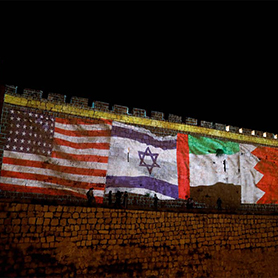Step 1: First Impressions (Literal Comprehension)
Provide time for learners to read the entire Declaration independently or in hevruta pairs. Ask them to underline any words or phrases that stand out because they identify with, support, question, oppose, or would like to better understand them.
Once everyone has finished, invite the group to share the passages they underlined and why they highlighted the phrases that they did. Encourage everyone to engage in conversation and to air different perspectives.
Encourage learners to use the word “because,” to help them support their statements.
Step 2: Thinking About Sections (Chunking the Text)
Ask learners to read the Declaration a second time, using a different lens. Share with them a “chunking” of the text into four sections, and challenge them to capture the essence of each section by writing a title and a one-sentence description of each. This is a great opportunity to get creative and write catchy titles! They can include any questions that may have surfaced in their second reading of the document.
Leave enough time for everyone to talk about how they divided the document, and the titles and descriptions they selected. As varied interpretations arise, encourage the group to engage respectfully in an effort to understand different perspectives.
Step 3: From Sections to a Comprehensive Document
After the group has shared their titles and descriptions, move into the next stage: Let the group sift through all of the sections, titles, and descriptions, and assemble a “new” or “revised” Declaration that synthesizes the ideas, interpretations, and emphases that resonate for them. Asking everyone to work collaboratively can be challenging, but the results can be rewarding.
By hearing multiple perspectives on the Declaration, and by reviewing each section, learners will grasp the essence of the entire document, and understand their own perspectives on it.
Discussion:
This is a great opportunity to pause and gather the group’s impressions from this exercise. For example, what seemed to be similar across the groups? What was surprising? What, if any, were the significant differences and what might have accounted for these?
Use these questions—or your own—to help learners gather their thoughts about the challenges that faced Israel’s founders
Questions to Consider:
- What are some of the tensions referenced in the Declaration?
- How can I reconcile passages that seem in conflict with each other?
- How do these tensions continue to impact Israel’s reality today?
Step 4: Wrap Up Discussion
Use these questions—or your own—to help learners gather their thoughts about the challenges that faced Israel’s founders
- What do you think were some of the challenges or complexities the authors had in creating the Declaration?
- Why do you think Israel wanted—or needed—such a document?









